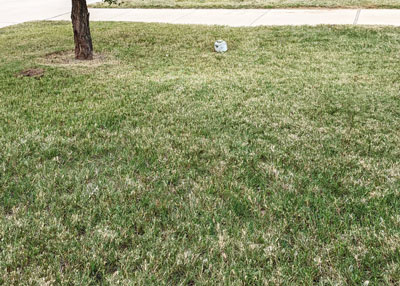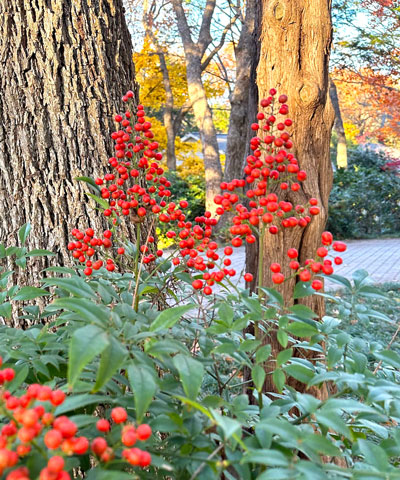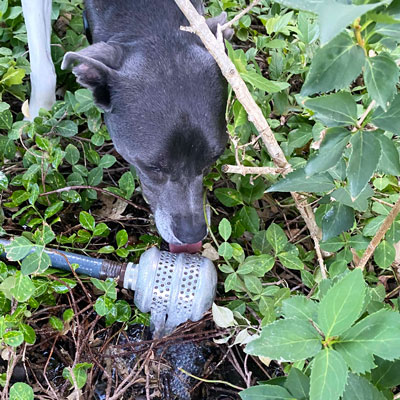Q&A – Ask Neil: December 1, 2022
(Please read these instructions carefully.)
Before you post your question, please look at recent issues to see if someone else has already asked it. You might find your answer there.
November 24, 2022 Q&A part one
November 24, 2022 Q&A part two
How to submit your question…
• Click the link provided below to post your question. After you submit your question, a new window will pop up giving you the address to which you can e-mail a photo to accompany your question. Clear, medium-resolution photos. (Try to avoid low-res thumbnail photos, please, in case I have to zoom in to see things.)
• Click here to post your question.
• Please only post your question one time.
• One question per reader, please.
• Please use this only for posting questions – not for standard emails.
• Watch for your answer in the following week’s e-gardens.
• I choose those of greatest general interest. For example, plant IDs seldom make the cut.
• I must have your first name or initials.
• I must have your city or county. (Texas is a very large state.)
QUESTION 1
WHY WON’T PERSIMMON BEAR FRUIT?
Question: I have had a persimmon tree for eight years. I purchased it from a reliable nursery and was told that I only needed one tree for pollination. I’ve never had any fruit. I discussed it with the nursery and was told it takes five or more years before it produces. The tree looks healthy. What should I do? Larry S., Coleman Co.
Answer: I’m assuming you planted one of the Oriental persimmon varieties. If so, please read what the fruit experts with the Texas AgriLife Extension Service of Texas A&M have written about them in Bulletin E-611, notably about pollination, etc.
Eureka is very popular and is frequently sold. It is self-fruitful (does not require a second tree to set fruit), but it does produce seed. The TAMU horticulturists recommend that Eureka and Fuyu (another seeded variety) not be planted near other varieties if you wish to have seedless fruit. Otherwise, cross-pollination with another variety is advisable. Most fruit experts will tell you that persimmons can be a bit perplexing. Hopefully the fact sheet will help.
QUESTION 2
CAN BERMUDA LAWN BE LEVELED WITH BERMUDA REMAINING IN PLACE?
Question: The front yard of our home has a slightly uneven area roughly 5 feet across and a few inches deep between our live oak tree and the cleanout pipe. Is there a way to level the area and have the bermudagrass remain intact? Scott P., Justin.

Answer: Not really unless you’re willing to do it over several years. It would be much easier simply to use a square-bladed nursery spade laid almost parallel to the ground to lift the sod up with about 1 inch of soil. That would allow you to lay the sod aside, put new topsoil in place and rake it smooth, then replant the bermuda sod. The best time to do all of that would be late April or May. It would probably help to have a lawn roller to smooth it all out after the planting.
If you insisted on doing it with the bermudagrass in place you would need to screen the topsoil to remove all clods, roots and other debris, then filter it through the grass until you had added about 1 inch of topsoil. You would need to water it and allow the grass to grow up and through the soil. Wait six or 12 months and repeat. Or you could do the entire fill at one time. Dig sod from somewhere else in your yard and plant plugs into the fresh topsoil. All of this would be best done in late spring.
NOTE: Do not add any soil around the trunk of your tree. It looks like its root flare is already verging on too deep in the soil.
QUESTION 3
CAN I PROPAGATE NANDINAS FROM THEIR BERRIES? WHEN SHOULD I HARVEST THEM?
Question: I have standard nandinas in my landscape. I would like to have more and I’m wondering if I could raise them from the berries they are producing. Do I need to dry them out before planting? Bredt W., Azle.

Answer: Since you have the species nandina they will “come true” from seeds. Give them another few weeks to mature on the plants. Harvest them and plant them immediately into 1-gallon pots filled with loose, highly organic planting soil. Since they all will be the same genetically you could plant four or five seeds per pot for fuller plants. For what it’s worth, if your mother plants are crowded in any of your plantings, they can easily be dug and divided into pots or planted directly into beds, much as you would divide perennials.
QUESTION 4
SHOULD ALL PERENNIALS BE CUT BACK NOW?
Question: Only some of my perennials show cold damage, while others look undamaged, healthy and green. I thought you were supposed to wait until they died back completely before you trimmed them. Regardless, should they be cut back now? Tracy N., Mansfield.
Answer: Trim them as they turn brown. As long as the foliage is green it is manufacturing sugars that are stored in the root system for next year’s flower production. Not all plants die to the ground after the first freeze. Some perennials hold their leaves all winter long. Let them “tell you” when it’s time to prune them.
QUESTION 5
IS MULCH FROM THE CITY SAFE FOR USE IN THE GARDEN?
Question: Is mulch from city recycling safe? I have read articles that indicate you never know if you are getting disease or insect problems from such programs. Cost is obviously a consideration, but it is not the ultimate factor. Larry S., Frisco.
Answer: I would not be concerned about diseases and insects at all. My only concern would be in the amount of fresh organic matter that might be included in recycling compost. For example, if used pallets and lumber are included, they could break down rapidly enough to tie up nitrogen in the soil. Credible city recycling programs will tell you what they are including and how they are processing the compost. The DFW Metroplex where you live has some outstanding recycling programs. Remember that you are not only saving money by buying your compost through them, but you are also saving landfill space – and that will save you in the long run as well.
QUESTION 6
SHOULD VARIEGATED SEDGE BE CUT EACH SPRING?
Question: Should variegated sedge be trimmed each spring like monkeygrass (mondograss)? Mine seems to get so ratty looking. It is very difficult to hand-cull the dead leaves. Jo D., Frisco.
Answer: If it is having winter burn during the cold months, then yes, I would trim it to tidy everything up. I don’t use a lot of variegated sedge in my landscape because I have the same issue of browning that you do. I just get tired of fiddling with it. I think a lot of that is due to our high summer temperatures, highly alkaline soils (I live in Collin County as you do.) and periodic dry spells. Invest in sharp shears and the job should be easier. (Just for the record, I do not trim my mondograss.)
QUESTION 7
IS A TOPDRESSING OF COMPOST A COUPLE OF TIMES PER YEAR A GOOD IDEA?
Question: I hear the great benefit of applying the topdressing of compost to the lawn 1-2 times per year. It is quite common in my area. I wonder how long it actually takes for that compost to integrate into the deeper levels of the soil. Kaye D., Georgetown.
Answer: If you have read my writings for any period of time you have probably noticed that I have never made that recommendation. It’s not that it’s necessarily a bad thing. I would just prefer to see people use good compost in their soils, not on them. As examples, compost is more beneficial, in my opinion, mixed into vegetable gardens or flowerbeds instead. It will add some amount of nutrition to the lawn, but the organic matter will not soak into the soil as your question suggests.
QUESTION 8
CAN I TRANSPLANT MUSKOGEE CRAPE MYRTLES SUCCESSFULLY?
Question: I have two large Muskogee crape myrtles that were planted by the builder almost 4 years ago. Unfortunately, they are very close to my house. Every year they grow a lot and are now touching my roof. How successful will I be transplanting them elsewhere? Greg P., Frisco.
Answer: Muskogee is one of the very largest of all crape myrtle varieties. It should be a minimum of 12 to 15 feet out from the house. It is fairly easy to transplant crape myrtles, but if the trunk size is more than a couple of inches in diameter, it will require two or three people (or equipment) to lift the soil ball. Winter is the time to do the transplanting. Be patient. It’s going to be a job.
QUESTION 9
WHERE DO I APPLY WATER TO A NEWLY PLANTED CONTAINER-GROWN TREE?
Question: I have a newly planted Cedar Elm that was in a 100-gal. container. I am confused as to where I should apply the water. I’m told to apply 20 gallons per week. Do I water near the trunk and move outward? Do I water the entire root ball uniformly? Carolyn K., Plano.

Answer: Since the tree was grown in a container, all of its roots came with it when it was planted. Therefore, you can assume that they are spread uniformly throughout the root ball. You may have seen my recommendations this past summer of the use of a water bubbler on the end of your hose. It’s about the size of a fist and has dozens of holes in it to break the flow of the water into gurgles that will not wash the soil away. If you were using a bubbler, you could merely lay it on two or three sides of the trunk perhaps 8 inches out from the trunk and let it run long enough to soak the soil deeply (probably a couple of minutes). Hopefully the extra soil that was left over from digging the hole was not piled up around the trunk but used to make a water-retaining basin instead. If that is not the case, use a hoe when the soil is somewhat dry to pull it out away from the trunk and form a doughnut-like ring to hold water.
